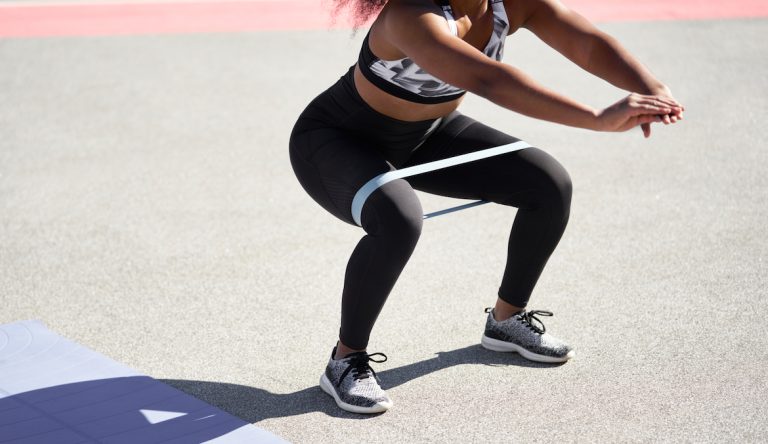
[ad_1]
Muscle activation is all about preparing your body for exercise, and safely making the most out of every movement. Here’s what you need to know.
What does it mean to activate muscles?
Muscle activation is about “waking up” your muscles, says Ellen Thompson, a head personal trainer at Blink Fitness. A few things are going on here. First, your brain is telling those muscles to snap to attention: They’re going from a state of rest to a stage of action. Then, activity in the muscle sends the resources your body needs to complete that movement. Namely, increased blood flow and oxygen, says Thompson.
Think about doing a weighted squat. If you take on the load of a barbell on your shoulders, and your lower body isn’t prepared for it, you could crumple under the weight. But if you squeeze—or activate—your core and lower body, you’ll be able to handle that weight, lowering down and raising back up using the power of your muscles.
Activation warm-up exercises also mimic the movement pattern of whatever you’re about to do in both your muscles and joints, but in a less intense way than the full exercise, so your body is prepared to do the same thing again under tougher circumstances.
“Muscle activation warm-ups can help prevent injury and also improve stamina,” Thompson says. “By activating specific muscles, you can improve your range of motion and flexibility, which can help with overall movement quality.”
Why is muscle activation important?
Activating your muscles is the difference between playing catch when you were expecting a ball to get thrown at you, versus trying to catch a ball when one comes flying at your face. If your muscles are activated (prepared), they know the work is coming, so you can squat, lift, or lunge deeply, powerfully, with control, and without putting your body through any jerky, sudden movements. Not activating your muscles might leave you scrambling to “catch the ball,” which puts you at risk for injury, or not using the muscles you’re actually intending to work in a given movement.
“Not doing a muscle activation warm-up can lead to increased risk for injury and reduce the overall effect of your workout,” Thompson says.
How to activate your muscles
In a muscle activation warm-up, practice the move you’re about to do under tension with just body weight, or with a lighter weight than with the full load. Or zero in on gently engaging the muscles you know you’ll be working. For instance, although you probably don’t run with weights, an activation warm-up for a run could include lunges to get the major leg and glute muscles to “turn on.”
Once you’re in the thick of a workout, a trainer’s cue to “activate” your muscles is really a mental game. “It usually means we want you to consciously contract or engage a specific muscle to increase its activity,” Thompson says. “What I find works best for my clients is to think about sending energy to the muscle and contracting. For example, if you’re trying to activate glutes during a squat, you can focus on squeezing your glutes at the top of the movement.”
Thompson says that if you’re not sure whether you’re activating your muscles, you’re probably not. But you can also touch a muscle to see if it’s hard and engaged, or even look at your muscles in the mirror.
“You can tell if you’re activating a muscle by feeling for tension or contraction,” Thompson says. “You can also watch for muscle definition or movement in the target muscle group.”
[ad_2]
Source link